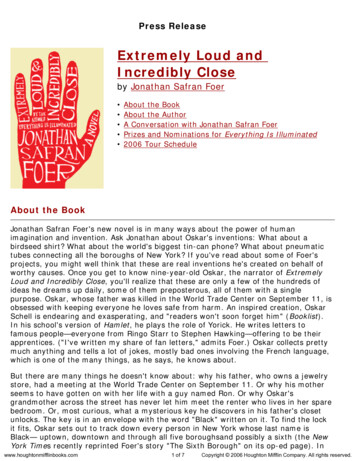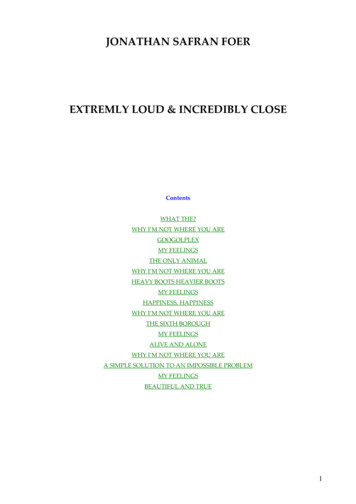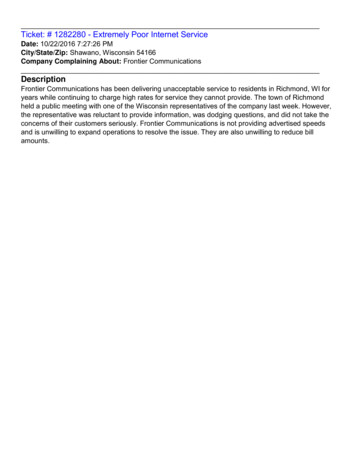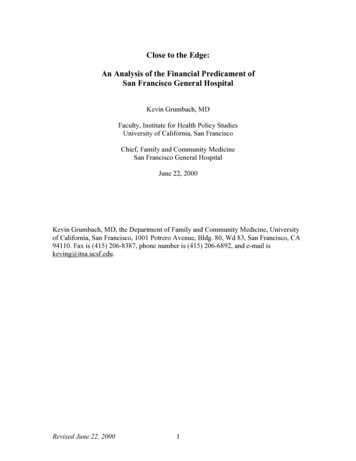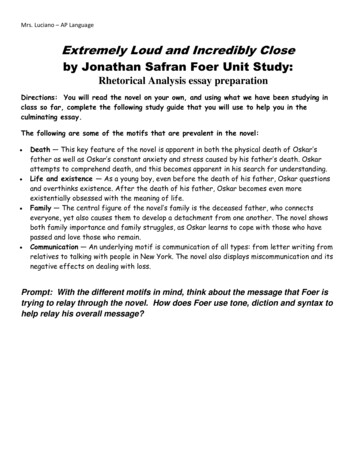
Transcription
Mrs. Luciano – AP LanguageExtremely Loud and Incredibly Closeby Jonathan Safran Foer Unit Study:Rhetorical Analysis essay preparationDirections: You will read the novel on your own, and using what we have been studying inclass so far, complete the following study guide that you will use to help you in theculminating essay.The following are some of the motifs that are prevalent in the novel: Death — This key feature of the novel is apparent in both the physical death of Oskar’sfather as well as Oskar’s constant anxiety and stress caused by his father’s death. Oskarattempts to comprehend death, and this becomes apparent in his search for understanding.Life and existence — As a young boy, even before the death of his father, Oskar questionsand overthinks existence. After the death of his father, Oskar becomes even moreexistentially obsessed with the meaning of life.Family — The central figure of the novel’s family is the deceased father, who connectseveryone, yet also causes them to develop a detachment from one another. The novel showsboth family importance and family struggles, as Oskar learns to cope with those who havepassed and love those who remain.Communication — An underlying motif is communication of all types: from letter writing fromrelatives to talking with people in New York. The novel also displays miscommunication and itsnegative effects on dealing with loss.Prompt: With the different motifs in mind, think about the message that Foer istrying to relay through the novel. How does Foer use tone, diction and syntax tohelp relay his overall message?
1) Diction – how does the author’s use of words help to paint a picture and relay his overall message?Line/chapter #/page #:How does the diction in the above example help to get the author’s message across to his readers?Line/chapter #/page #:How does the diction in the above example help to get the author’s message across to his readers?Line/chapter #/page #:How does the diction in the above example help to get the author’s message across to his readers?
Line/chapter #/page #:How does the diction in the above example help to get the author’s message across to his readers?Line/chapter #/page #:How does the diction in the above example help to get the author’s message across to his readers?Line/chapter #/page #:How does the diction in the above example help to get the author’s message across to his readers?
2) Syntax – how does the author’s sentence structure contribute to the author’s overall message?Line/chapter #/page #:How does the syntax in the above example help to get the author’s message across to his readers?Line/chapter #/page #:How does the syntax in the above example help to get the author’s message across to his readers?Line/chapter #/page #:How does the syntax in the above example help to get the author’s message across to his readers?
Line/chapter #/page #:How does the syntax in the above example help to get the author’s message across to his readers?Line/chapter #/page #:How does the syntax in the above example help to get the author’s message across to his readers?Line/chapter #/page #:How does the syntax in the above example help to get the author’s message across to his readers?
Extremely Loud and Incredibly Close by Jonathan Safran Foer Unit Study: Rhetorical Analysis essay preparation Directions: You will read the novel on your own, and using what we have been studying in class so far, complete the following study guid
